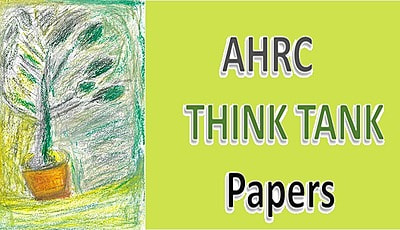INDIA: Why is the eradication of malnutrition a mission impossible?
The success of the first phase of Chandrayann-1, undertaken on Tuesday, 21 October 2008, entitles India to claim membership in the elite club of countries that have proved their technological and financial capabilities in sending a mission to the moon. According to the Indian government, the project that is estimated to have cost 78 million USD stands as proof of India’s scientific advancement and financial standing. Among other studies to be carried out, Chandrayaan-1 will put a probe on the moon’s surface to explore the possibility of the presence of water there.
India’s mission to the moon is not merely the culmination of the dreams of a few individuals. Persons ranging from the former President of India, Dr. Abdul Kalam, an accomplished scientist, to politicians and millions of ordinary Indians have dreamt about it. A successful moon mission will be a true acknowledgment of expectations that will satisfy the dreams of many citizens. It will be the proof that when India has the will, it can deliver.
However, the success of the moon mission poses a series of questions. They challenge this same will power when it comes to meeting the daily, essential needs of ordinary Indians. A country that is able to spend millions on a moon probe to find out whether there is water on the moon has failed. It has not met the requirement of millions of Indians who need access to clean drinking water. An estimated 800 million people in India are denied this basic essential of life. An equally alarming number of children, estimated to be about 1,800, die every day from preventable water-borne diseases. This is however but a fraction of the estimated 21% of communicable diseases, spread through water, which devastates life in India.
In a country that has about 77% of its population living in rural areas, only 14% of this rural population has a toilet. 25% of the total population lives below the poverty line unable to earn even a USD a day.
About 60 million children are underweight in India. The prevalence of underweight children in the country is among the highest in the world, and is nearly double that of Sub-Saharan Africa. Studies conducted by international agencies, in cooperation with the government, reveals that malnutrition in India is a concentrated phenomenon. Given its impact on health, education and productivity, persistent under-nutrition is a major obstacle to human development and economic growth. It is especially true among the poor and the vulnerable, where the prevalence of malnutrition is highest. In spite of having the largest child development programme in the world, progress achieved in addressing child malnutrition in India is among the lowest in comparison to similar countries with the same economic indices.
A relatively small number of states, districts and villages bear a large share of the burden 6 states and 50 percent of villages account for about 80 percent of the malnutrition cases. These states are Maharashtra, Orissa, Bihar, Madhya Pradesh, Uttar Pradesh, and Rajasthan. These states also provide the maximum number of elected representatives to the national assembly. The facts and figures illuminating the condition of life in these states prove how much the mainstream politicians in India are not interested in addressing the pressing needs of the people.
India thus far has failed to address this key area of the Millennium Development Goal hunger and malnutrition. Of the people affected by poverty and malnutrition, the majority belong to the backward communities like the Scheduled Caste and the Scheduled Tribe.
There are policy and statutory measures in place specifically mandated to address the pressing needs of these communities. However, it is a fact that the Scheduled Caste and the Scheduled Tribe continue to face hardships which suggest not only administrative neglect. The dismal condition of life affecting about 800 million out of l.2 billion of the Indian population, mostly from the above six states, is the result of a caste -based mindset that dominates every aspect of Indian life.
It is in this context that the Indian mission to the moon attracted protest and criticism from rights groups, intellectuals and a section of ordinary Indians. It is trite to argue that for a country, which has the expertise and skills to explore the moon, cannot find means to provide the basic needs of life for its own people. It is equally trivial to argue that the failure of government machinery, mandated to care for ordinary Indians, is plagued with corruption and nepotism. This systemic dishonesty prevents government departments from actually reaching out to ordinary people.
Corruption, nepotism and ineptitude in government services are the external manifestations of a deeper problem plaguing the Indian administration. The disregard for the value of human life emanates from the caste-based mindset of Indian administrators.
The exploration to the moon does not leave space for the scientists to discriminate one machine from the other in the name of caste, descent, skin colour and ethnicity. Among Indians however the above four quotients are the essential denominators that determine the value of an individual. This is exactly the reason why the advancements India made in some fields does not seem to be of any use or pride to a large section of the Indian population.
These are the ones who, unfortunately, due to no cause of their own are forced to live in conditions that shame their counterparts in some of the poorest countries in the world. It appears that the distance between them and the Indian administration is farther than the earth and the moon.



